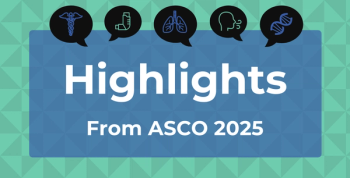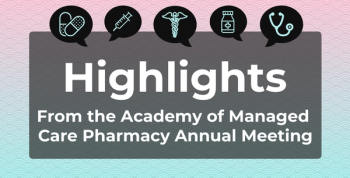
ESMO Panel Takes on Challenges, Opportunities in AYA Cancer Survivorship
Key Takeaways
- Rising cancer rates in young adults necessitate addressing long-term survivorship challenges, including treatment-related toxicities and lifestyle factors.
- Obesity is linked to increased cancer risk, and exercise may offer anti-tumor benefits, prompting exploration of personalized exercise interventions.
Experts at the European Society for Medical Oncology Congress meeting in Berlin, Germany, explore rising cancer rates in young adults, focusing on survivorship challenges and the role of lifestyle interventions in care.
Rising rates of cancer among young adults have alarmed public health leaders around the world, who seek to understand what’s driving this trend.
For oncologists, seeing more young patients also raises the question of what happens after treatment, and this prompted the European Society for Medical Oncology (ESMO) to schedule a session, “Beyond Survival: Long-term Toxicities in Young Adults With Cancer,” held Monday during the 50th Congress, which concludes tomorrow in Berlin, Germany.
“Thanks to the advantages in modern oncology, more young adults are surviving their cancer,” said session cochair Emmanouil Saloustros, MD, DSc, from the University Hospital of Larissa, Greece. “But this survivorship stands with new and complex challenges for us—issues such late effects of treatment, lifestyle factors, as well as the integration of new tools like digital health. The PROs—patient reported outcomes—require us to rethink the way we provide the follow up care.”
Neil Iyengar, MD, who in July became co-director of Breast Oncology and director of Cancer Survivorship, Emory University Winship Cancer Institute, started with a talk on obesity, physical activity and exercise in young adult survivorship,
“There are many mechanisms that link obesity to the development and progression of cancer,” Iyengar said. Several key cancer hallmarks, he said, “are negatively impacted by excess adiposity and classical obesity.”
His research group is studying adipose tissue dysfunction, specifically how inflammation of this tissue triggers factors that promote both tumor growth and environments that support estrogen receptor positive tumors. Other factors add to the mix, such as “immune cell alteration and attenuation of cytotoxicity, as well as altered energy metabolism, which allows the growing tumor to leverage excess adiposity and lipid as an energy source.”
Fold in obesity’s effects on DNA, insulin signaling, and the gut microbiome, and Iyengar said it’s clear that improving diet and exercise are needed—not only can these changes help patients lose weight, but they also improve quality of life.
“We know that the health of our young survivors in particular really depends on adequate supportive care for multiple parameters of social, physical, and mental health and several lifestyle interventions,” he said. This involves telephone coaching and other behavioral change interventions; clinical trials have included steps such as delivering a treadmill and a wearable to the patient to track exercise.
Exercise, he said, “may have direct anti-tumor activity, and there are several mechanisms that are hypothesized through which exercise may directly alter both the tumor and the tumor microenvironment to promote drug delivery.”
Boosting the tumor’s vascular structure can decrease hypoxia, increasing drug delivery and possibly giving local immune cells an assist. Iyengar said once preclinical models of these mechanisms are tested, more evidence in humans is needed to validate them.
“If we look at the population data, we certainly see plenty of evidence linking exercise to both a decreased risk of developing cancer as well as improved outcomes after a cancer diagnosis, and this is independent of obesity,” he said, showing results from a large registry study that linked reductions in several cancer types with exercise.
Of course, exercise is an adjunct, not a replacement for treatment, Iyengar said; he highlighted results from the CHALLENGE trial presented in June at the American Society of Clinical Oncology (ASCO) that demonstrated this point.
The key question today is, “Can we personalize the exercise intervention?” he asked. “How do we tailor these interventions specifically for our young adult survivors?”
Bringing the concept of “precision medicine” into this realm includes designing optimal dosing for patients, and Iyengar shared evidence from a breast cancer registry in the United States that demonstrated after about 10 metabolic hours per week of self-reported exercise, additional hours were not associated with any incremental increased benefit. This knowledge is helpful when recommending exercise to patients, Iyengar said.
“But the question remains,” he added, “What dose of exercise should be we be recommending to our patients, and does it depend on where the patient is in their cancer journey?” In collaboration with Lee Jones, MD, Iyengar has developed a tele-exercise platform for digital delivery of individualized exercise through partnerships,2 which can be prescribed along with other equipment. The plan is to evaluate efficacy in a phase 2 trial; for some patients, the recommended dose may be higher than ASCO guidelines.
Early and Late Survivorship Care
Alice Indini, MD, a medical oncologist at Fondazione IRCCS Istituto Nazionale dei Tumori in Milan, Italy, next addressed how to manage adolescent and young adult (AYA) patients in different phases of survivorship, an important consideration as the AYA population is at higher risk of developing comorbidities. Although the definition of AYA may vary, it is generally those aged 15 to 39 diagnosed with cancer (some place the lower limit as low as age 12).
“There is an emerging issue with regards to young patients who need chronic cancer therapy to keep their disease under control, which is something with a significant impact in terms of adverse events and of quality of life,” she said.
Although she said there are smaller increments within each, Indini focused on 2 broad phases: early survivorship and late survivorship, with the early phase being roughly the first 5 years after treatment ends. Challenges include not only physical and psychosocial issues, “such as isolation from their peers, mental distress, emotional distress,” which can isolate them from their school and their job, and hurt their finances.
“These [things] are beyond the scope of us as oncologists, but we need to be aware of this, because we should [refer] our patients to professionals that can help them to resolve these issues,” she said. Late survivorship, by contrast, comes when patients are at increased risk of developing any type of chronic condition, which can be severe, disabling, and potentially also life threatening. In addition, this is when the risk of developing secondary tumors rises—it doubles for men and increases 1.34 times for women, up to 25 years from the cancer diagnosis.
Typically, she said, the most common cancers are breast, colorectal or gynecological cancers, thyroid and melanoma. “When we do our surveillance, we should take into account the risk stratification of patients. It depends on what the patient has received during the treatment, and the risk will be stratified accordingly.”
The AYA population has a higher prevalence of certain factors for which concomitant factors can elevate risk for this population; compared with healthy adults, AYA cancer survivors have a high prevalence of smoking, obesity, and absence of physical activity, she said.
What is the best way to serve this group? Indini pointed to ESMO’s AYA Book of Care, which includes a section on survivorship. “We have a lot of work to do,” she said.
Keys are early diagnosis of cardiovascular complications or secondary tumors, psychosocial support that includes both mental health and social supports, promotion of healthy behaviors that prevent obesity, a focus on secondary prevention—including tobacco cessation—and screening.
“In our follow up of care, we should coordinate with general practitioners disease specialists, and sometimes we should transition care from pediatric oncology care to adult oncology care. And our follow up should be customized according to the risk of our patients, so our surveillance should be adapted,” based on prior treatments and family circumstances.
She also called for:
- Research
- Coordinated Care and shared guidelines
- Tools and checklists, including help for the general oncologist and for the primary care doctors
- A “survivorship passport,” for patients, as well as time to implement it.
“Even though we are not AYA cancer specialists, with the increasing number of AYA cancers and AYA cancer survivors, we are going to deal with this problem in our clinical practice,” Indini said. “Survivorship is not just a phase. It is a continuum of care, and each phase has different risks and needs. We have to know this, because we have to need to address them appropriately.”
What’s Ahead for AYA Cancer Survivors
Ivana Bozovic Spasojevic, MD, PhD, of the Institute for Radiology and Oncology of Serbia, in Beglrade, started with the good news: the majority of AYA patients with cancer will be cured. But the unknowns are alarming, and they are increasing. Data show increasing numbers of young people with breast, thyroid, cervical, and gynecological cases in females, and testicular, gastrointestinal, hematological malignancies in males,
“Usually, we refer to these as early onset cancers, and they're usually understudied. However, they really have some challenges, and they can really impose a high burden,” she said. “The recently published population-based study also has shown that the early onset cancer have the highest incidence in the high-income countries. However, the highest mortality is in the low-income and middle- income countries…
“To date, there is no single validated hypothesis to explain the significant increase in the early onset cancer and among these cancers,” Bozovic said. Among the problems with these trends:
- Traditional screening guidelines leave out many young adults in these age groups.
- Symptoms might be neglected, and when cancer is finally caught, adherence to treatment is reduced due to adverse effects.
- Fewer in the AYA population make it into clinical trials.
- Even if treatment works, these survivors have many years ahead with significant physical, emotional, and social upheaval due to cancer.
- Age-specific challenges include the need to address fertility and family planning issues, sexuality and body image issues, and educational and financial needs—sometimes just as they are being diagnosed.
Bosovic’s group has conducted surveys that reveal the dearth of resources for this population, including a shortfall of cancer care units that can meet their needs.
“The medical system and providers must recognize that [this] age group requires specialized teaching and increase psychosocial support during their treatment, regarding not only just treatment, but also the side effects. What would be the minimum standards for the cancer care unit?”
In 2017, more than two-thirds of the participants stated in surveys these patients have limited access to specialized centers for AYA. Even if resources existed, they were not aware of the research initiatives on AYA in their cancer centers and had no access to specific services related to the early or late toxicities. The numbers were more pronounced in Eastern and Southeastern Europe, although things improved in 2023 when a survey asked similar questions.
So, how can things improve? How can European nations create uniform, high quality services and overcome fragmentation—specifically during the transition from the pediatric to adult care?
Bozovic is part of a consortium that has published a position paper on minimum standards, which identified 8 key points for AYA cancer care. It’s a start, but she worries that even when there is consensus in guidelines, things fall apart in community settings.
Take fertility reservation. Despite broad agreement recommending this in all guidelines, Bozovic said a recent survey of European cancer survivors “indicated actually that half of the respondents [were] not aware of the fertility preservation options, and that has influenced significantly anxiety, depression and quality of life.
“So. the second part: how to better understand the disease, not only the biology, but the whole about the disease. And we do know that there is no doubt that clinical trials are essential for advancing cancer care, survival outcomes,” she said. But not only is clinical trial participation only 5% to 10%, but knowledge about genomics specific to the AYA population is almost nonexistent, she said.
AYA patients have special concerns, such as challenges at work due to cognitive impairment, fatigue, and other physical effects of the treatment. “They might also experience financial discrimination and [seek] policies such as a right to be forgotten, which [are] promising solutions allowing individuals to withhold disclosure of a past cancer diagnosis under specific circumstances,” Bozovic said.
“We have many international initiatives, but they are going to work only if we coordinate with the national [health system] and if we put them in the context of the local healthcare context,” she said.
Is Digital Health an Answer?
Inez Vaz-Luis, MD, medical oncologist and researcher at Gustave Roussy, offered an overview of whether technology could help the AYA population better engage with health systems during treatment and beyond, both to seek mental health support and to improve quality of life.
“If we put this in the context of a sustainable health care system, a health care system with rising costs, with rising patient law, with workforce shortages, with uneven resource distribution…I would argue that we have to reinvent why we are doing care if we really want to make a difference,” Vaz-Luis said.
Research on remote patient monitoring has already shown some success, including in Europe, she said. What it has shown is that young patients actually have a higher initial burden when first diagnosed with cancer. “The good news is that they improve with these systems. But this is a story during active treatment. What about the after treatment?”
Multiple trials are under way to test the limits of digital health, including what AI can do—whether a “Chatbot” can go beyond use as an educational tool and offer actual support. Not all studies using AI have been focused on the AYA population, but in the coming years more interventions will focus on this group.
“Later this year, we'll heard from the
References
- Sung H, Siegel RL, Rosenberg PS, et al. Emerging cancer trends among young adults in the USA: analysis of a population-based cancer registry. Lancet Pub Health. 2019;4(3)e137-e147. DOI:
10.1016/S2468-2667(18)30267-6 - Iyengar NM, Salehi E, Lavery JA, et al Effects of plant-based diet (PBD) and exercise therapy (Ex) on weight and body composition in patients with primary hormone receptor (HR) positive breast cancer: A phase 2 randomized controlled trial. J Clin Oncol. 2025;42 (suppl 16): Abstract 548.
https://doi.org/10.1200/JCO.2024.42.16_suppl.548 - Sella T, Snow C, Freeman H, et al. Young, Empowered and Strong: A web-based education and supportive care intervention for young women with breast cancer across the care continuum. JCO Clin Care Inform 2021;5.
https://doi.org/10.1200/CCI.21.00067
Newsletter
Stay ahead of policy, cost, and value—subscribe to AJMC for expert insights at the intersection of clinical care and health economics.







































